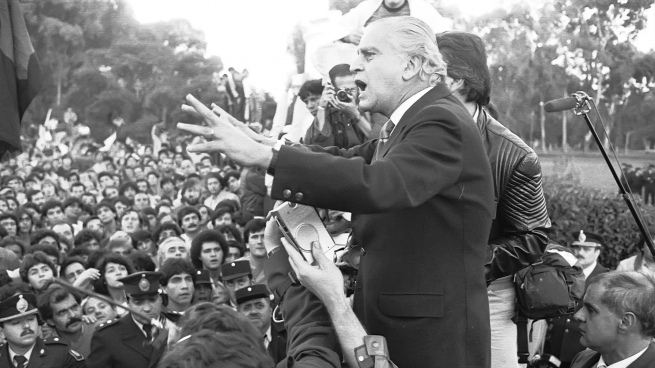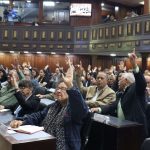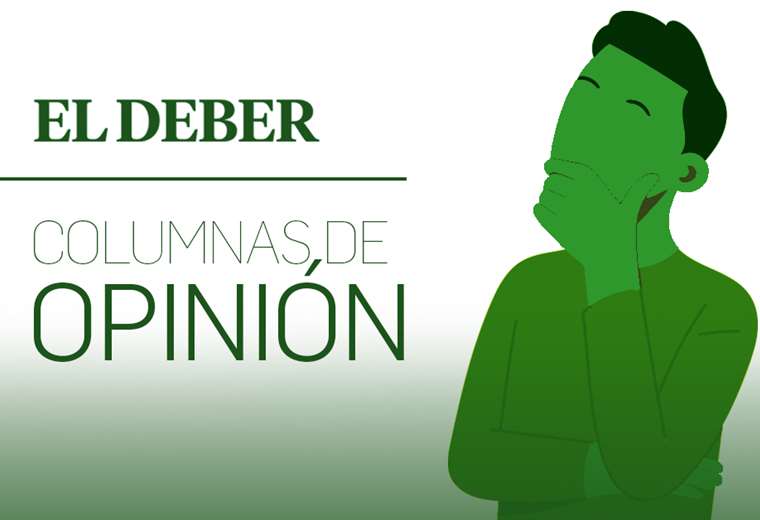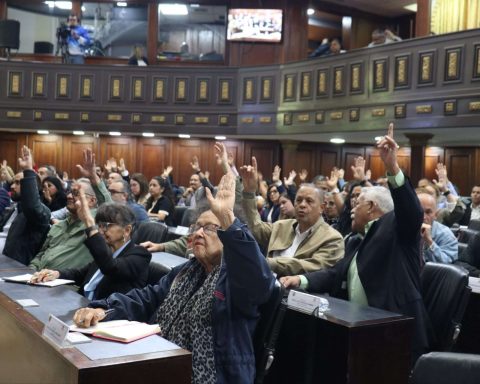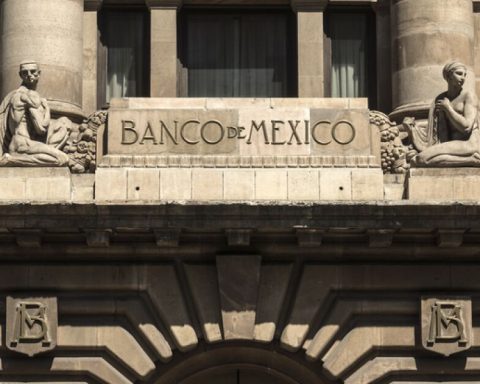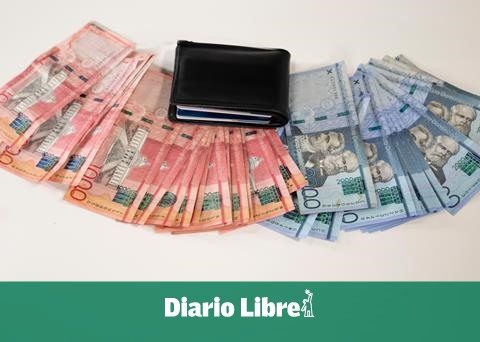A politician committed to democratic institutions and the unity of Peronism who saw his great desire to become president frustrated would be a fair definition for the career of Antonio Cafiero, who would turn 100 this Monday.
Public accountant, Catholic militant, minister in the government of Juan Domingo Perón and emblematic leader of Justicialism, Cafiero had a leading role in Argentine political life for almost seven decades.
Born September 12, 1922 in San Isidro, he joined the Argentine Catholic Action (ACA) from a very young age and from there he joined university political activity in the years prior to the emergence of Peronism. In those times, and even before graduating as an accountant, Antonio met who would be his wife and great life partner, Ana Goitía, with whom he had ten children and 39 grandchildren.
His career as a student leader earned him that Perón summoned him to a position abroad and appointed him as Financial advisor at the Argentine Embassy in the United States, where he remained until 1951.
From Washington, he maintained an extensive exchange of correspondence with Perón, in which Cafiero told the PJ leader about the growth of the United States and the way in which its global financial dominance was outlined through an institution such as the IMF, in the first Cold War times.
He then held positions in the Foreign Ministry, and At the age of 30, he was appointed Minister of Foreign Tradethus becoming the youngest member of the cabinet of the government of the founder of PJ.
The differences between the Catholic Church and Peronism caused Cafiero a great personal conflict that moved to politics. The promulgation of the divorce law in 1954 would mark a point of no return in the relationship between the Government and the ecclesiastical hierarchy, which would decisively support the military riots that took place a year later and that would bring about the overthrow of Perón.

Shortly before the bombing of Plaza de Mayo in June 1955 and of the September uprising of that year, Cafiero left his position as minister after having long talks with Perón in which they could not reach an agreement.
“I did not agree with Perón’s policy towards the Church, I believed that we had to fight not with the Church, but with some bishops who were against us. I had a discussion with him and decided that it was best to leave, “Cafiero himself said about his departure from the government.
After the fall of Peronism, Cafiero was arrested and remained in prison for a year, to then join the resistance. He visited Perón in exile on several occasions and was appointed coordinator of the National Justicialist Movement in 1962.
At the beginning of the ’70s, and when the call for general elections without proscriptions for Peronism was imminent by the dictatorial government of Agustín Lanusse, union sectors promoted Cafiero’s candidacy for the presidencybut Perón would finally lean towards Héctor Cámpora.
After the return of Justicialism to the Government, Cafiero took over as head of the Caja de Ahorro y Seguro. Two years later he was appointed comptroller of the province of Mendoza by Isabel Martínez de Perón and then Minister of Economy, after the “Rodrigazo” crisis.
With the civic-military dictatorship installed after the coup of March 24, 1976 Cafiero was imprisoned and they put together a legal case for the theft of a piano during his management in Mendoza. It was dismissed because it was all a fabrication. The piano in question (a Pleyel) is still used in concerts offered at the Teatro Independencia in that province.
In 1983, Cafiero put himself at the head of a line of justicialismo with the intention of competing in the presidential election, but was defeated. by the binomial that they integrated Italo Luder and Deolindo Felipe Bittelwho would be defeated by Raúl Alfonsín in the historic elections of October 30 of that year.
Before the defeat of Peronism at the polls, it had been agreed that Cafiero was a candidate for governor in the province of Buenos Airesan agreement that the former mayor of Avellaneda Herminio Iglesias decided to ignore in a party congress in which he stayed with that nomination.
The burning that Herminio Iglesias made of the funeral coffin with the inscription of the UCR in the closing act of Luder’s campaign constituted one of the most remembered episodes of Argentine political life. Cafiero would lose the gubernatorial elections to the radical Alejandro Armendáriz. Beyond how much that episode could have influenced the triumph of the UCR, the truth is that Iglesias was marked as one of “the marshals of defeat” by sectors of Peronism that began to demand a renewal.

Cafiero took the lead in this process and, being denied the possibility of being able to compete in internal elections, ran outside in the legislative elections of 1985, in which he was elected national deputy in a contest in which Peronism was divided.
JTogether with Carlos Grosso and the then governor of La Rioja, Carlos Saúl Menem, he led the so-called Peronist renewal, that promoted the realization of interns in each one of the districts, and that process made possible his nomination for the governorship of Buenos Aires in the 1987 elections, in which he would be the winner.
But during Holy Week of that year, the Carapintada soldiers led by Aldo Rico rose up against the Alfonsín government and Cafiero made himself available to the constitutional authorities.
“In times where it is necessary to strengthen the democratic consensus, we must bear in mind the figure of Cafiero and what he did in those days. He was with Alfonsín at Casa Rosada and accompanied him during a speech he gave on the balcony. He even accompanied the President to Campo de Mayo when he went to speak with the rebel military”, recalled in dialogue with Télam the current national deputy of the Front of All (FdT) Leopold Moreauwho in 1987 was a recognized legislator of the UCR.
On September 6, 1987, Cafiero obtained a resounding victory in the province of Buenos Aires by prevailing over the candidate Juan Manuel Casella, from the UCR. That victory projected him as president of the PJ and his candidacy for the presidency seemed insurmountable.
Nevertheless, Menem would present a battle to him and, at the head of more orthodox sectors, he would obtain victory in a remembered internal election that was held on July 8, 1988. A year later, the Riojan would be elected president of the Argentines and would govern the country for more than a decade.
“Alfonsín told his relatives that the support that Cafiero had given to the institutionality cost him to lose the possibility of being President. During Holy Week, Don Antonio supported the Government without conditions. We couldn’t find Menem,” Moreau recalled.

Despite the internal defeat, Cafiero aligned himself with Menem in the 1989 campaign and continued to govern until 1991. A year earlier, had promoted a reform of the constitution of the province of Buenos Aires through a plebiscite in which the modification proposal was defeated.
He remained within Peronism. He was designated as ambassador to Chile, then a national senator and served as a conventional constituent in 1994.
He was in the Senate until December 2001 and, in the midst of the institutional crisis of that year with the resignation of then President Fernando de la Rúa, Cafiero was appointed as chief of staff during the brief mandate of Eduardo Camaño, who headed the Executive Branch until the Legislative Assembly appointed Eduardo Duhalde on January 1, 2002. Cafiero returned to the upper house and remained in office until December 2005.
assumed later at the head of the Juan Domingo Perón Institutewhere he dedicated himself to disseminating the work and thought of the General who held the presidency of Argentina three times.
“He called me to work on women’s rights at the Institute and that’s how we put together the magazine Gender and Peronism. Antonio was always a broad guy who worked for the unity of Peronism. That could be seen on his birthdays, to which attended by figures from across the ideological spectrum,” said Ana Zelizsociologist and current Foreign Ministry official.
In October 2014, Cafiero died from a lung condition. His sons Juan Pablo and Mario, and his grandsons Santiago and Francisco, followed his legacy in politics.
